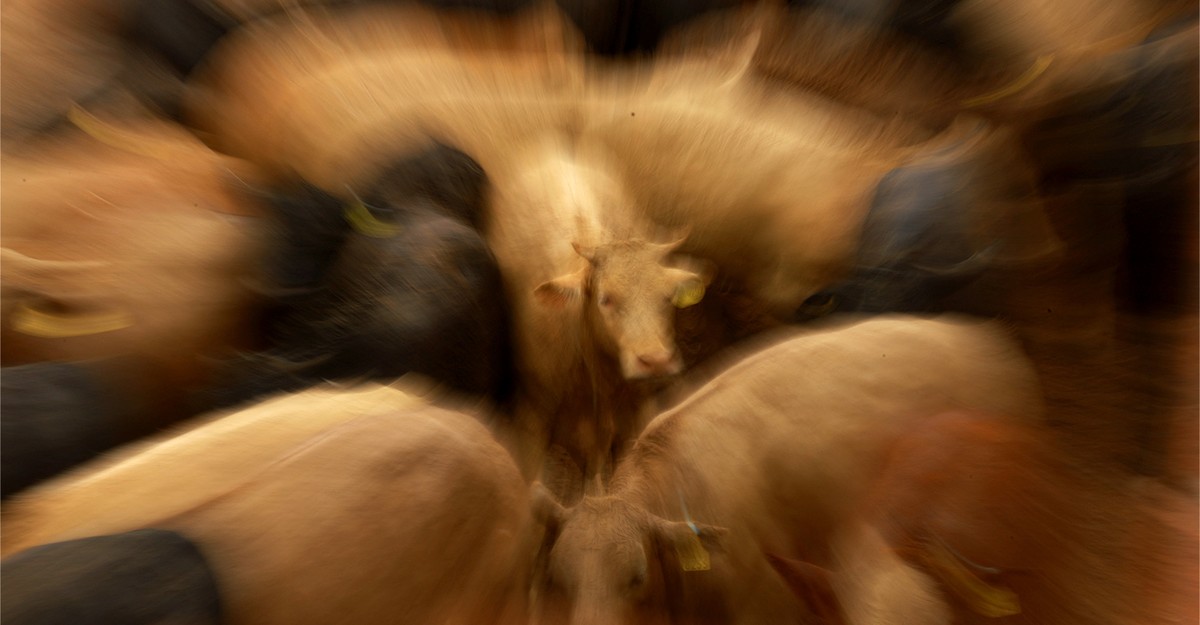Understanding The Threat: The Screwworm Fly And Its Impact On Agriculture

Welcome to your ultimate source for breaking news, trending updates, and in-depth stories from around the world. Whether it's politics, technology, entertainment, sports, or lifestyle, we bring you real-time updates that keep you informed and ahead of the curve.
Our team works tirelessly to ensure you never miss a moment. From the latest developments in global events to the most talked-about topics on social media, our news platform is designed to deliver accurate and timely information, all in one place.
Stay in the know and join thousands of readers who trust us for reliable, up-to-date content. Explore our expertly curated articles and dive deeper into the stories that matter to you. Visit Best Website now and be part of the conversation. Don't miss out on the headlines that shape our world!
Table of Contents
Understanding the Threat: The Screwworm Fly and its Impact on Agriculture
The screwworm fly, a parasitic insect with a devastating impact on livestock, poses a significant threat to agricultural economies worldwide. Understanding its lifecycle, preferred hosts, and the methods used to control its populations is crucial for safeguarding animal welfare and protecting agricultural livelihoods. This article delves into the biology of this menacing insect and explores the ongoing battle against its destructive presence.
What is a Screwworm Fly?
The New World screwworm ( Cochliomyia hominivorax) is a species of blow fly known for its parasitic larvae. Unlike other flies that feed on decaying matter, screwworm larvae are obligate parasites, meaning they require a living host to survive and develop. These larvae, commonly called "screwworms," burrow into the flesh of warm-blooded animals, causing severe myiasis – infestation by fly larvae. This infestation can lead to extensive tissue damage, secondary infections, and even death in affected animals.
The Screwworm Life Cycle: A Breeding Ground for Destruction
The life cycle of the screwworm fly is remarkably efficient, contributing to its rapid spread and devastating impact. The process typically unfolds as follows:
- Egg Laying: Adult female screwworms deposit their eggs near wounds or openings on the host animal. These wounds can be as small as a minor abrasion or a surgical incision.
- Larval Stage: Upon hatching, the larvae immediately burrow into the host's flesh, feeding on living tissue. This feeding process causes significant pain and distress to the animal. The larvae continue to grow and molt through several stages within the host.
- Pupation: After reaching maturity, the larvae drop to the ground to pupate. This stage involves the transformation from a larva into a pupa, a non-feeding stage within a protective casing.
- Adult Emergence: Adult screwworm flies emerge from the pupae, ready to mate and begin the cycle anew. The entire life cycle can be completed in as little as two to three weeks, depending on environmental conditions.
Impact on Agriculture and Livestock: A Costly Problem
The economic impact of screwworm infestations is substantial. Affected animals suffer significant weight loss, reduced productivity (e.g., milk yield in dairy cattle), and increased veterinary costs. In severe cases, mortality rates can be high, leading to direct financial losses for farmers and ranchers. Furthermore, the need for extensive treatment and preventative measures adds to the overall economic burden. This is particularly true in regions where screwworm infestations are endemic.
Control and Eradication Efforts: A Global Fight
The fight against screwworm flies involves a multi-pronged approach:
- Sterile Insect Technique (SIT): This highly effective method involves releasing large numbers of sterilized male screwworm flies into the environment. These sterile males compete with wild males for mates, resulting in a gradual reduction in the wild population. The has been a leader in employing SIT for screwworm eradication.
- Chemical Control: Insecticides can be used to control screwworm larvae, but their effectiveness is often limited due to the larvae's protected environment within the host tissue. Furthermore, concerns about environmental impact and insecticide resistance necessitate careful application.
- Wound Management: Preventing wounds on livestock is crucial in preventing infestations. Prompt treatment of any existing wounds is also essential to prevent screwworm egg laying.
Conclusion: Ongoing Vigilance is Key
The screwworm fly remains a significant threat to agriculture, demanding continuous vigilance and proactive control measures. While significant progress has been made in eradication efforts in certain regions, ongoing monitoring and the implementation of integrated pest management strategies are crucial to preventing the resurgence of this destructive parasite. Further research and collaboration are essential to develop even more effective and sustainable methods for combating this persistent agricultural pest. The future of livestock production and the economic well-being of many communities hinges on our ability to effectively manage this threat.

Thank you for visiting our website, your trusted source for the latest updates and in-depth coverage on Understanding The Threat: The Screwworm Fly And Its Impact On Agriculture. We're committed to keeping you informed with timely and accurate information to meet your curiosity and needs.
If you have any questions, suggestions, or feedback, we'd love to hear from you. Your insights are valuable to us and help us improve to serve you better. Feel free to reach out through our contact page.
Don't forget to bookmark our website and check back regularly for the latest headlines and trending topics. See you next time, and thank you for being part of our growing community!
Featured Posts
-
 Washington D C Weather Alert Heavy Rain Expected Wednesday
May 29, 2025
Washington D C Weather Alert Heavy Rain Expected Wednesday
May 29, 2025 -
 Ellen De Generes Daytime Tv Run From Success To Cancellation
May 29, 2025
Ellen De Generes Daytime Tv Run From Success To Cancellation
May 29, 2025 -
 Severe Weather Incoming Dc Area Faces Heavy Rain And Thunderstorms Wednesday
May 29, 2025
Severe Weather Incoming Dc Area Faces Heavy Rain And Thunderstorms Wednesday
May 29, 2025 -
 A1 Northumberland Abandoned Houses On Scrapped Road Project
May 29, 2025
A1 Northumberland Abandoned Houses On Scrapped Road Project
May 29, 2025 -
 Jesper De Jongs Dramatic Roland Garros Win A Two Set Comeback
May 29, 2025
Jesper De Jongs Dramatic Roland Garros Win A Two Set Comeback
May 29, 2025
Latest Posts
-
 Deodorant Recall Alert 67 000 Units Recalled Across Walmart Dollar Tree Amazon
Jul 17, 2025
Deodorant Recall Alert 67 000 Units Recalled Across Walmart Dollar Tree Amazon
Jul 17, 2025 -
 Life After Love Island Usa Amaya And Bryans Relationship Update
Jul 17, 2025
Life After Love Island Usa Amaya And Bryans Relationship Update
Jul 17, 2025 -
 September 2025 Ynw Melly Faces Retrial In Double Homicide Case
Jul 17, 2025
September 2025 Ynw Melly Faces Retrial In Double Homicide Case
Jul 17, 2025 -
 Love Island Usas Amaya And Bryan Building A Future Beyond The Villa
Jul 17, 2025
Love Island Usas Amaya And Bryan Building A Future Beyond The Villa
Jul 17, 2025 -
 September Retrial For Ynw Melly On Murder Charges After Jury Fails To Reach Verdict
Jul 17, 2025
September Retrial For Ynw Melly On Murder Charges After Jury Fails To Reach Verdict
Jul 17, 2025
